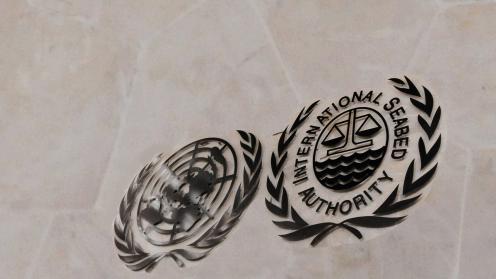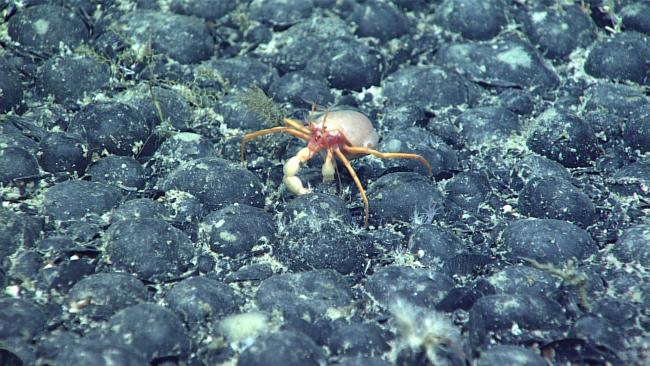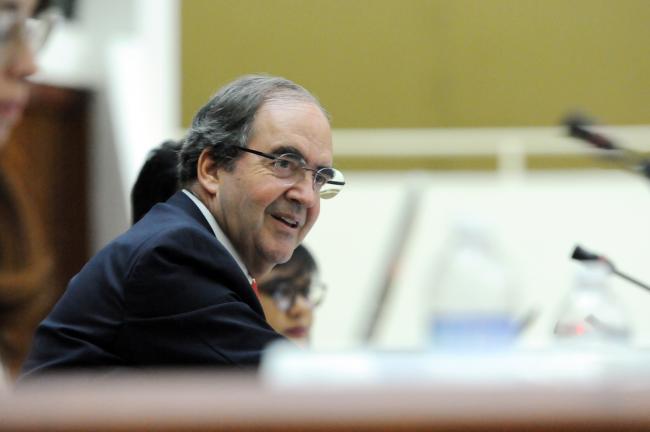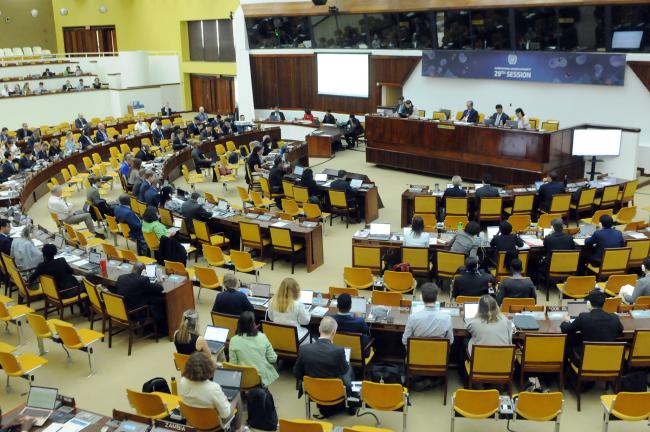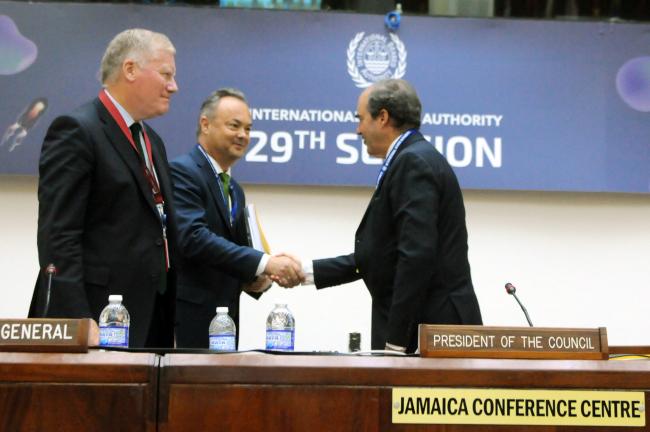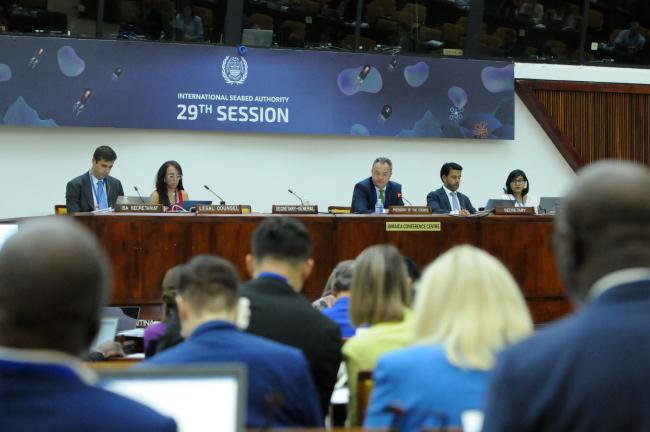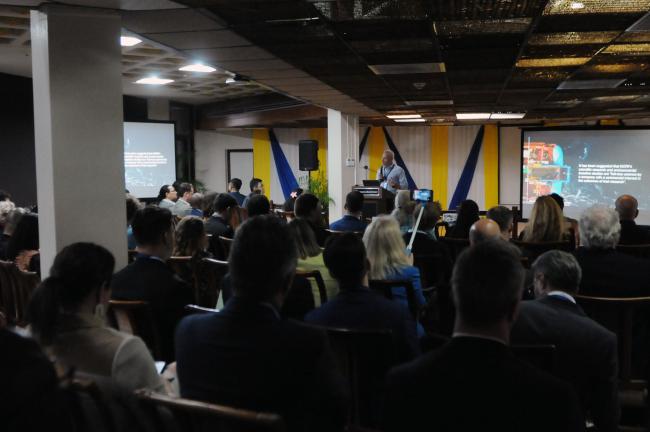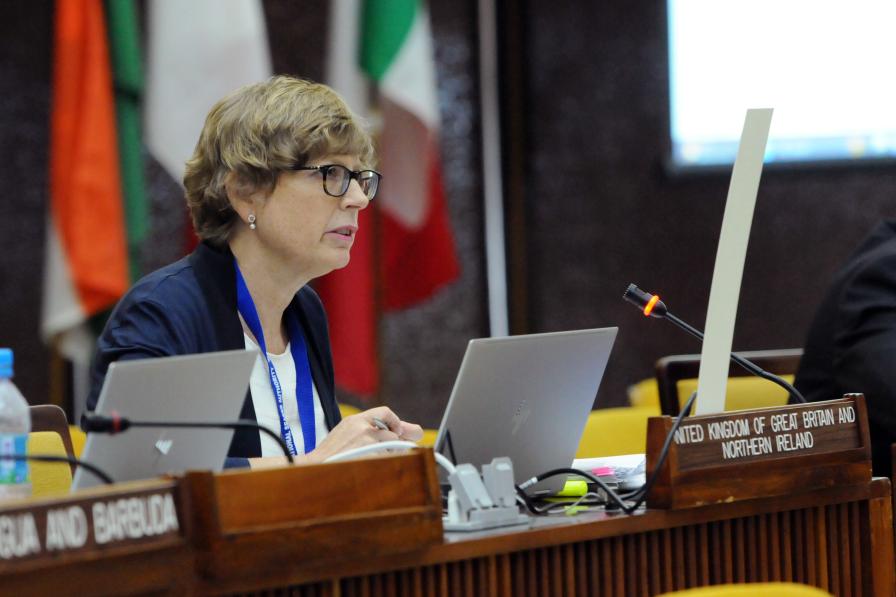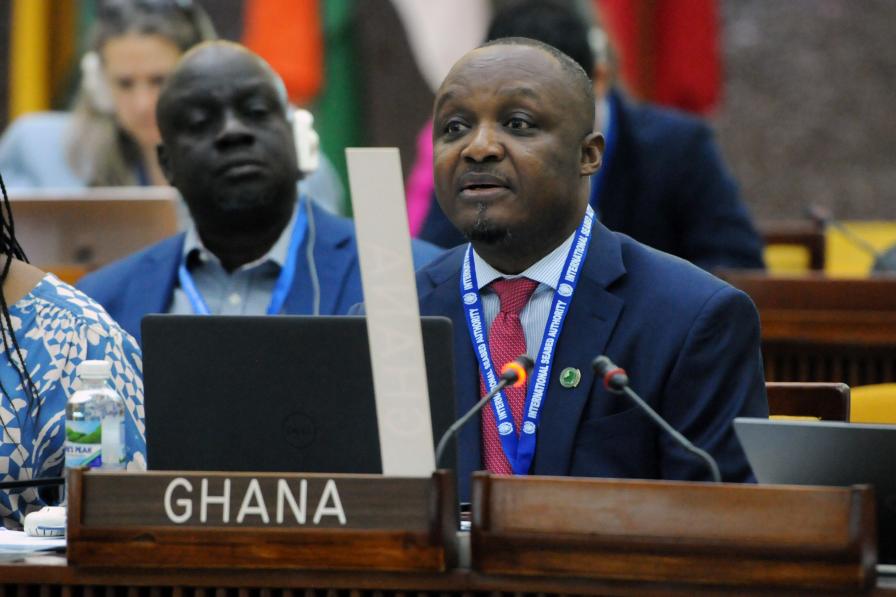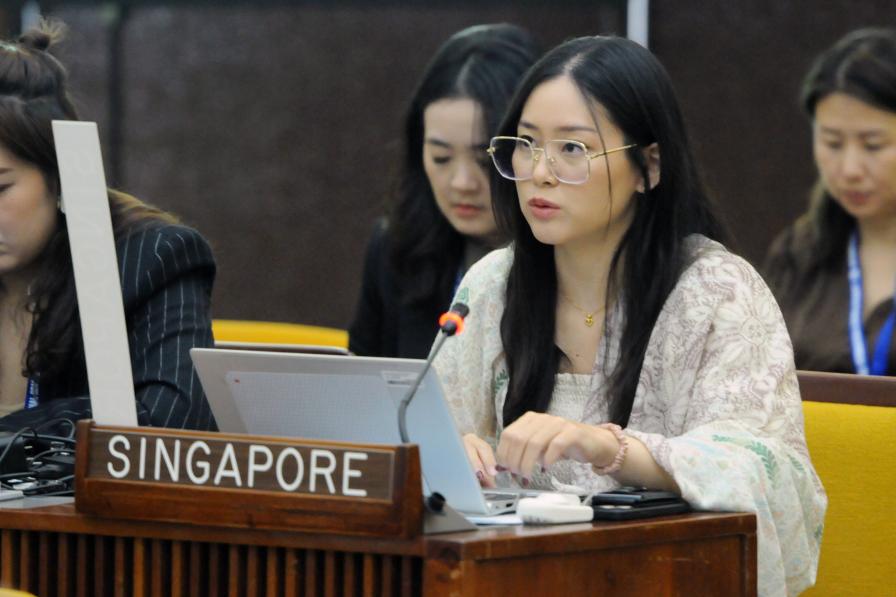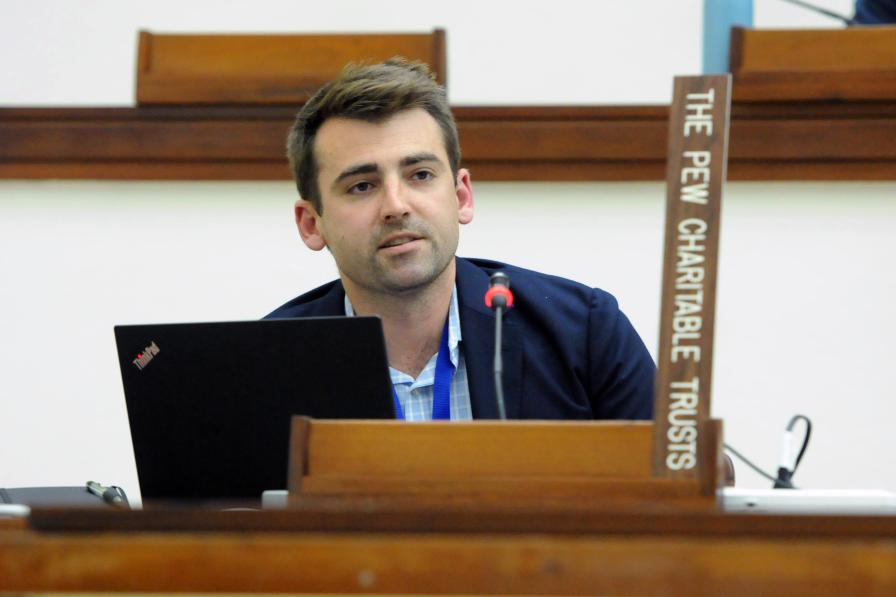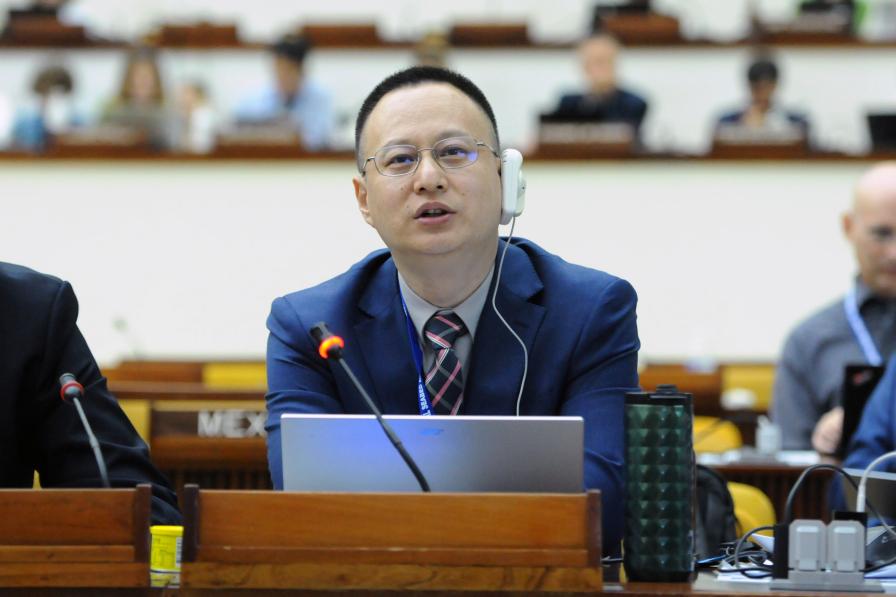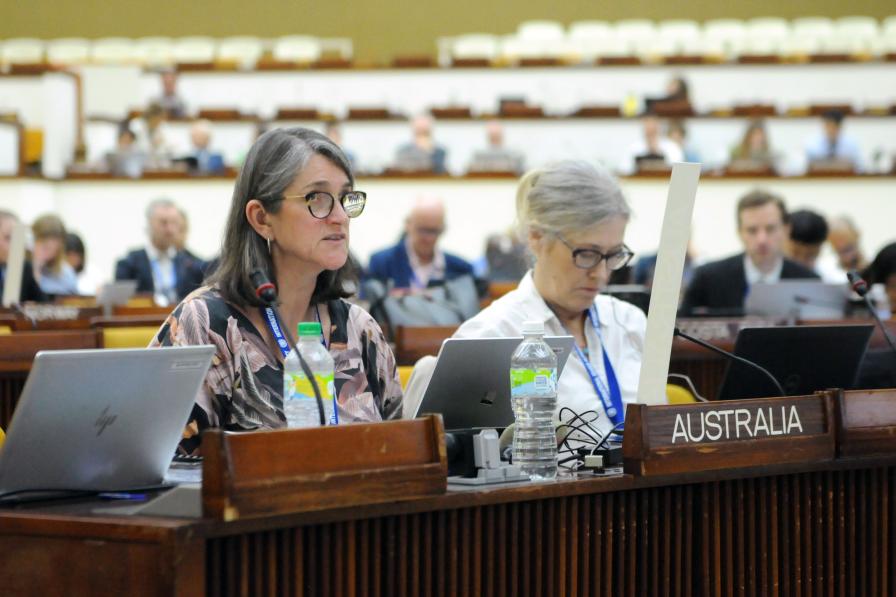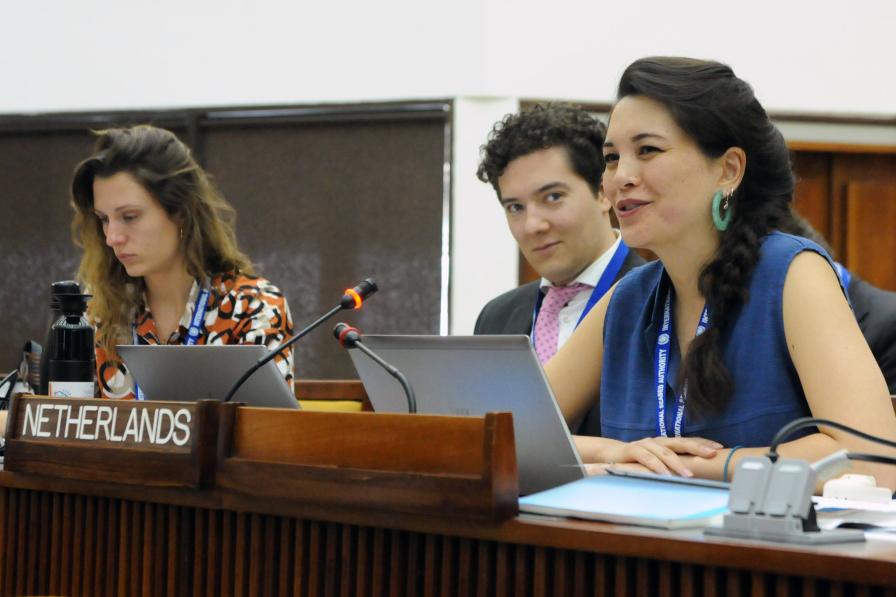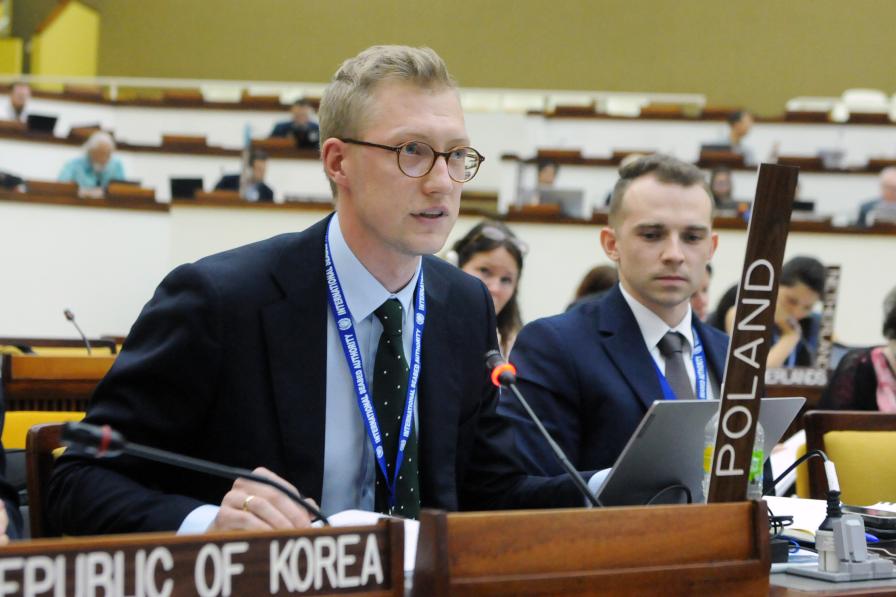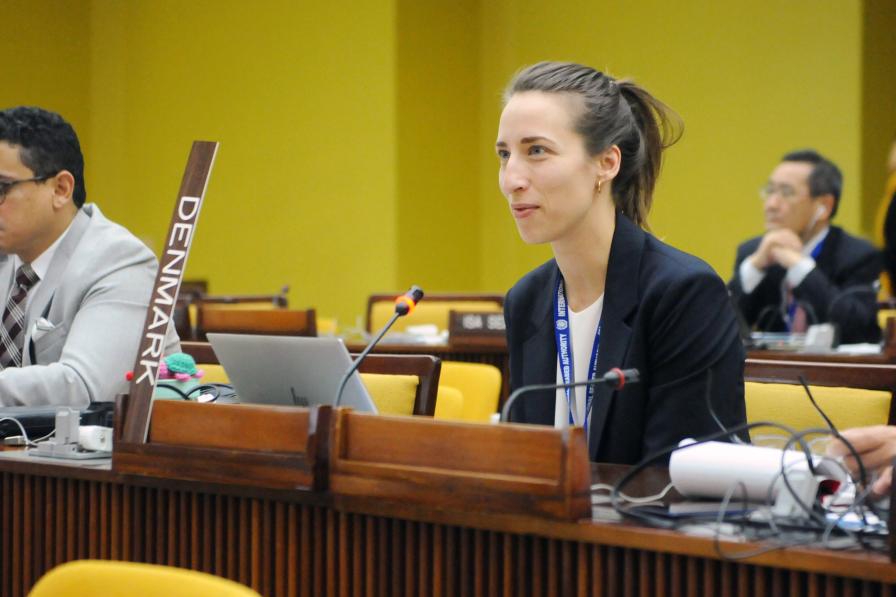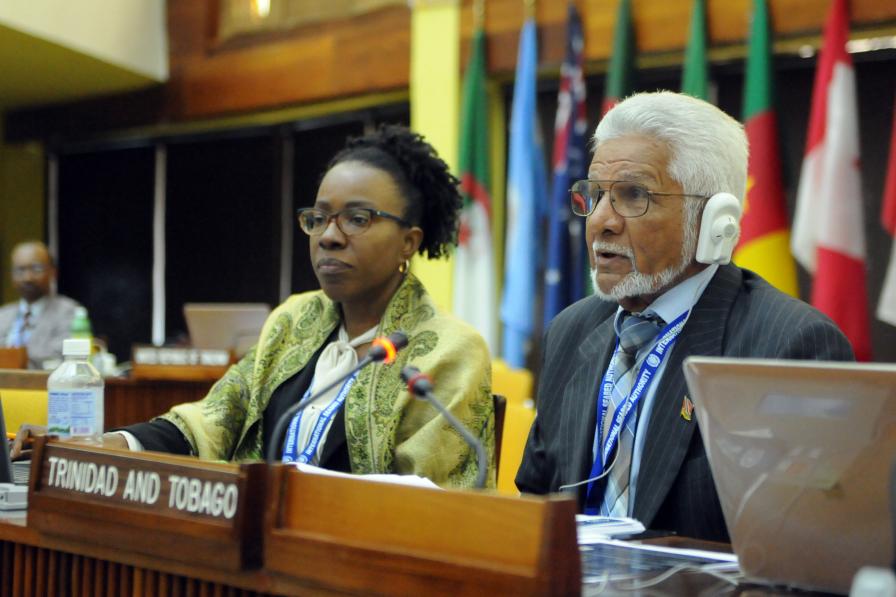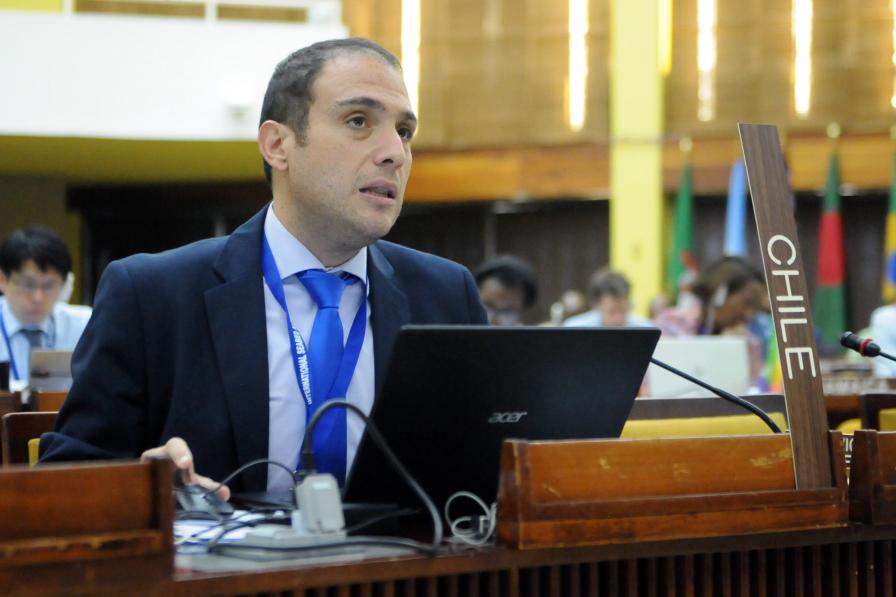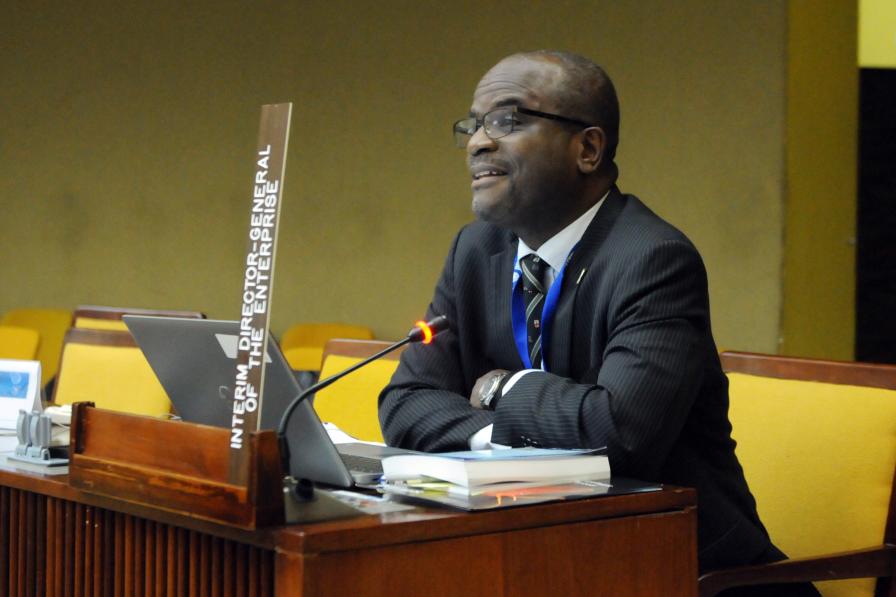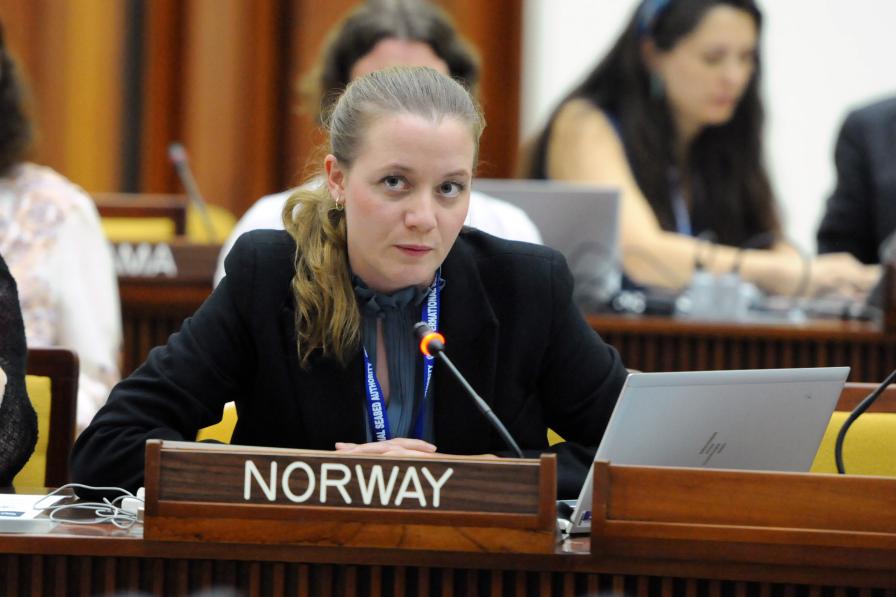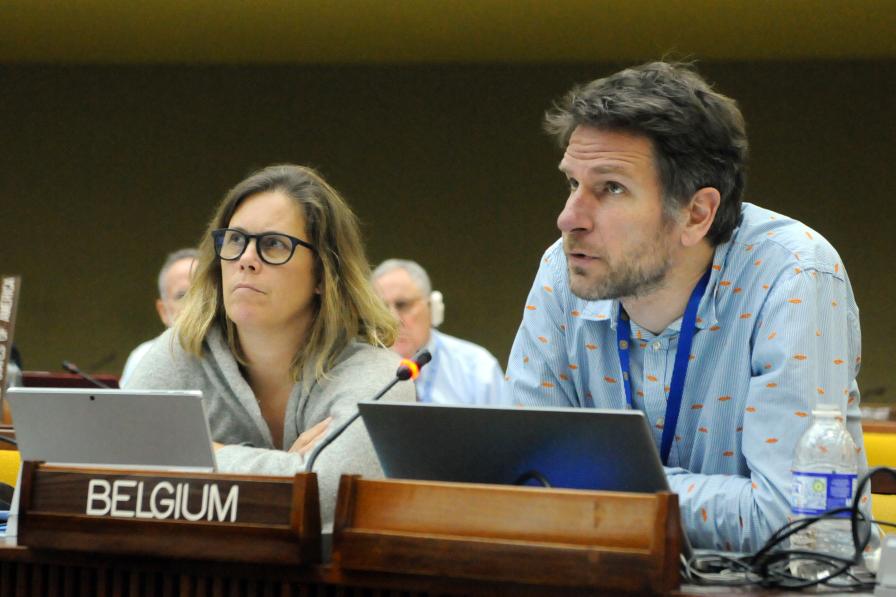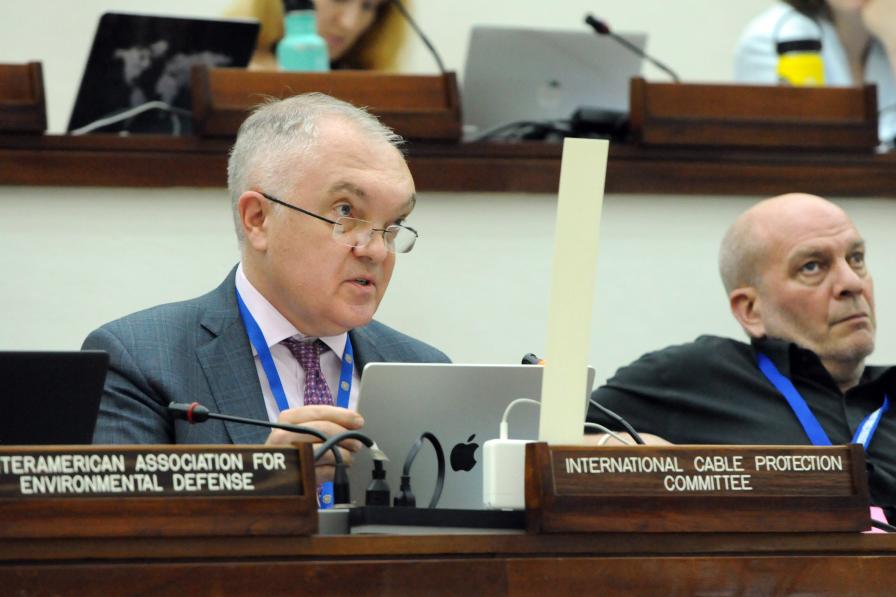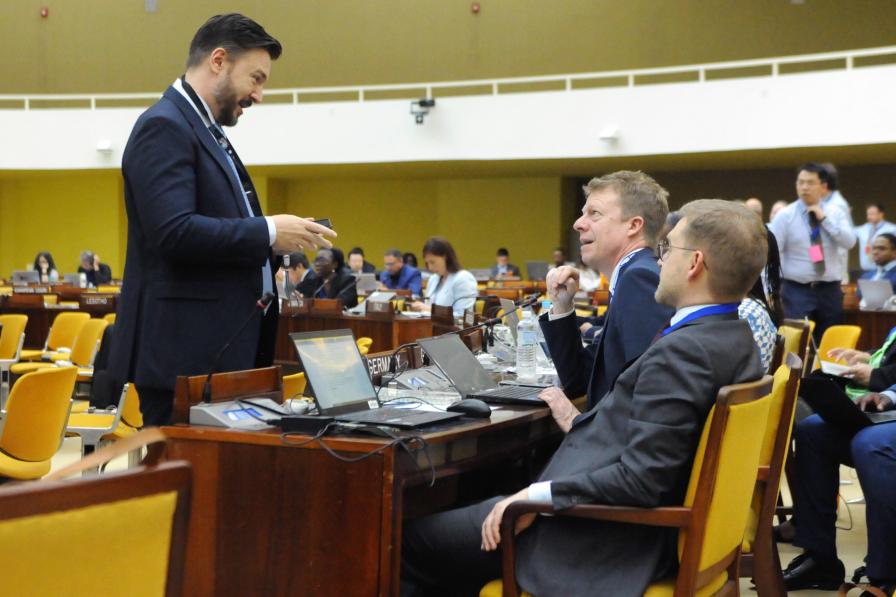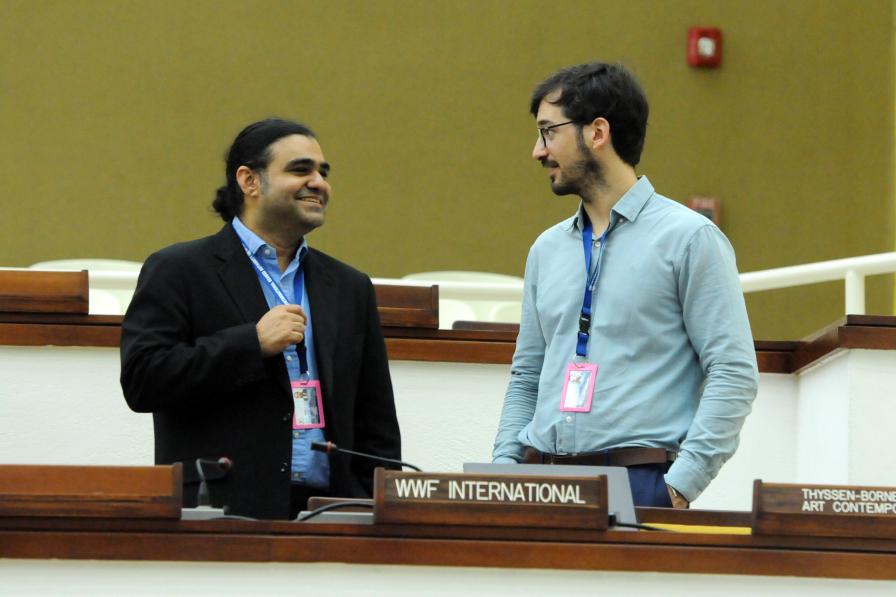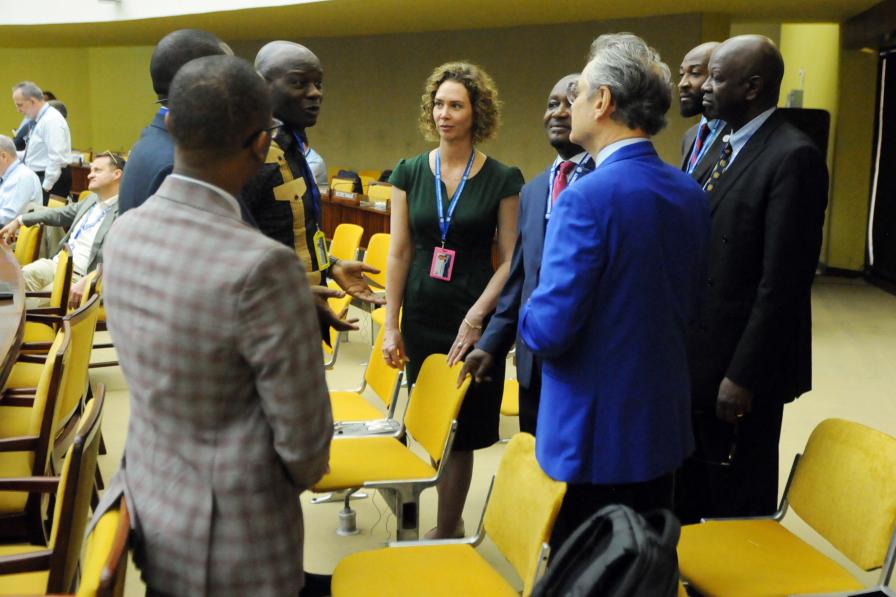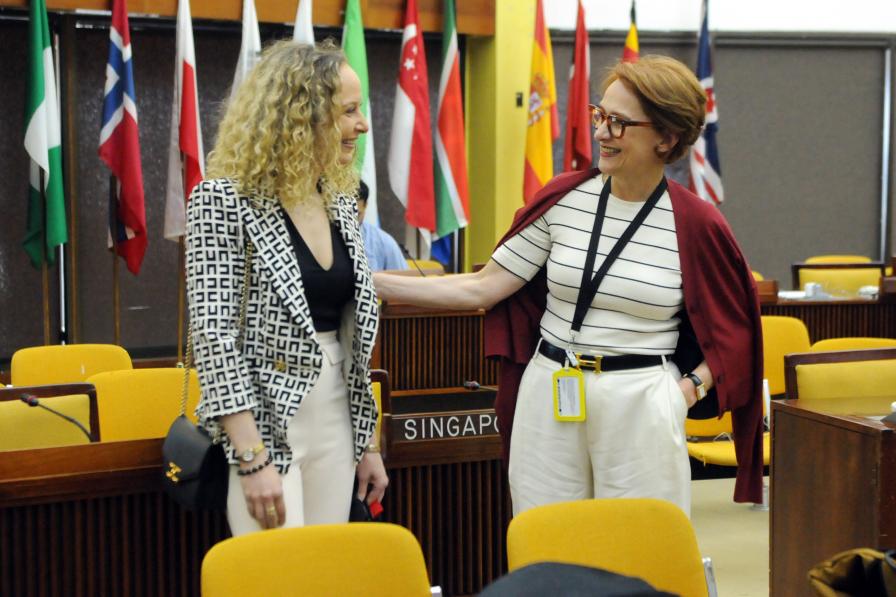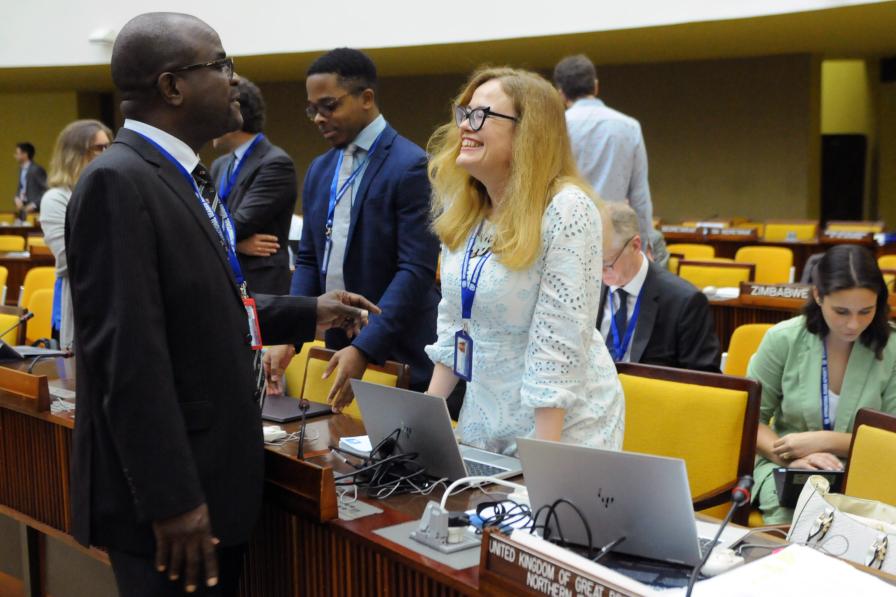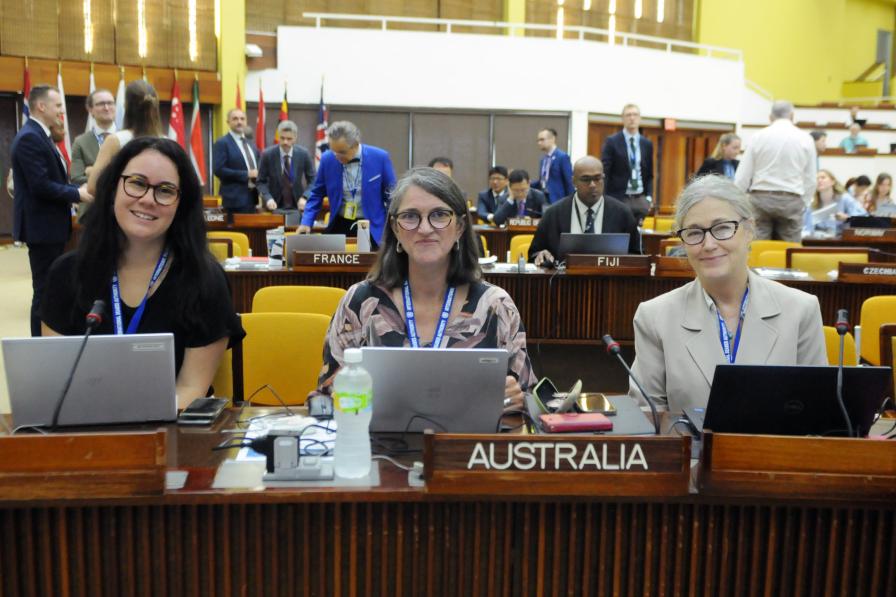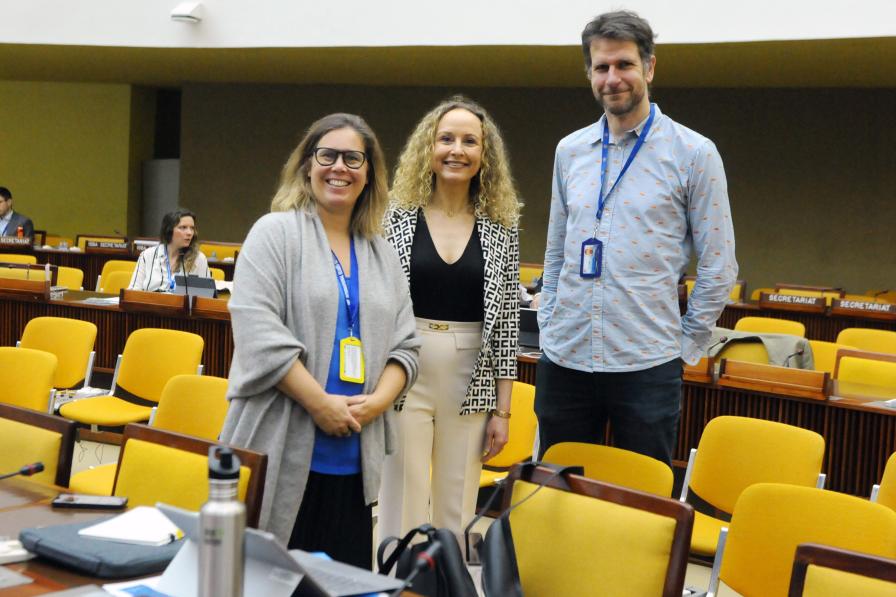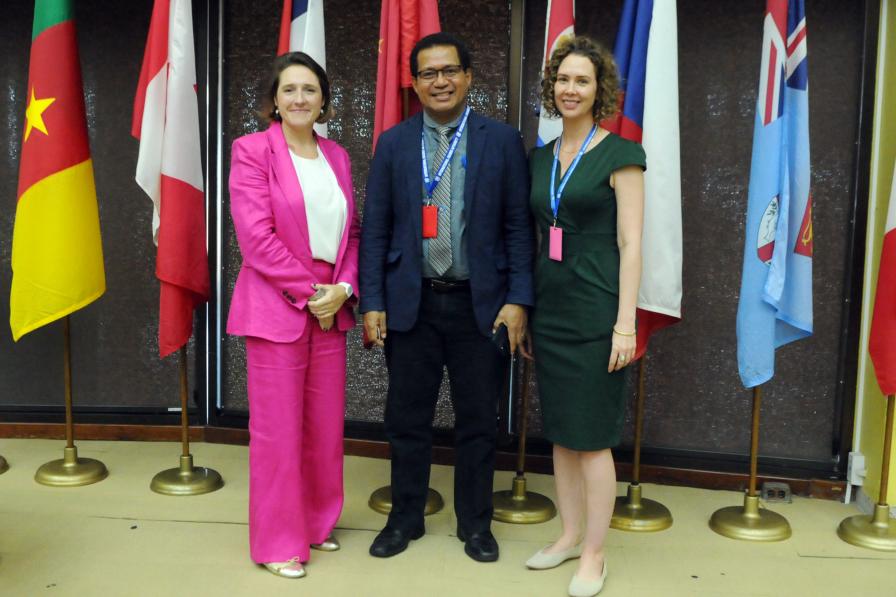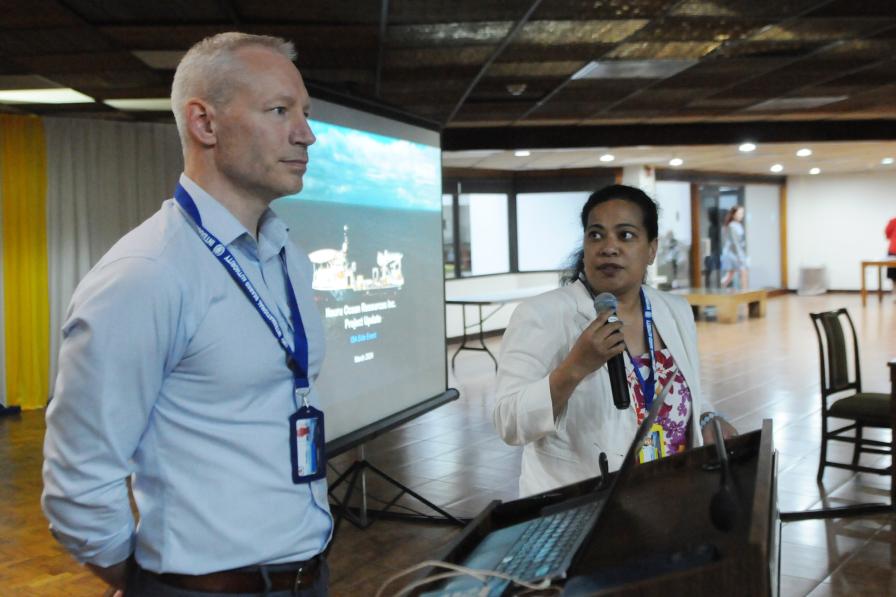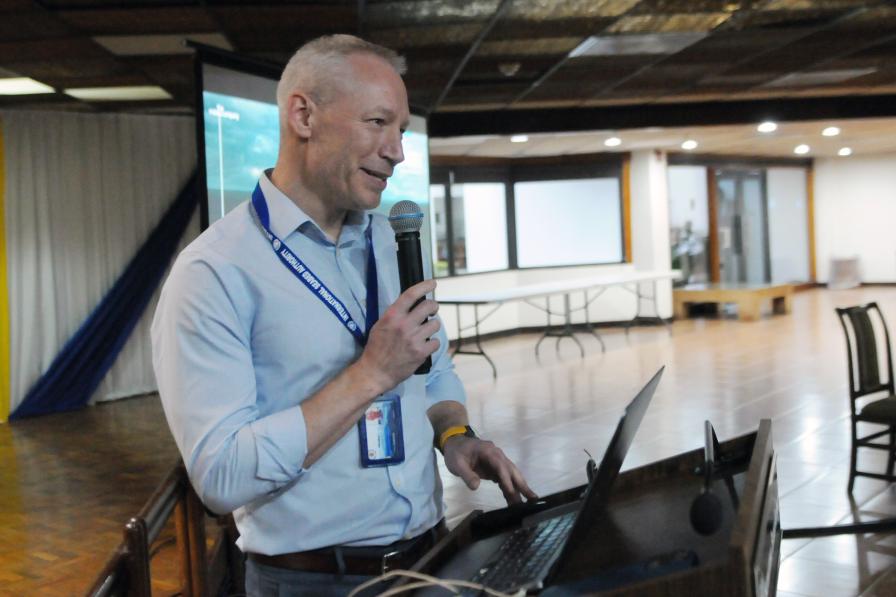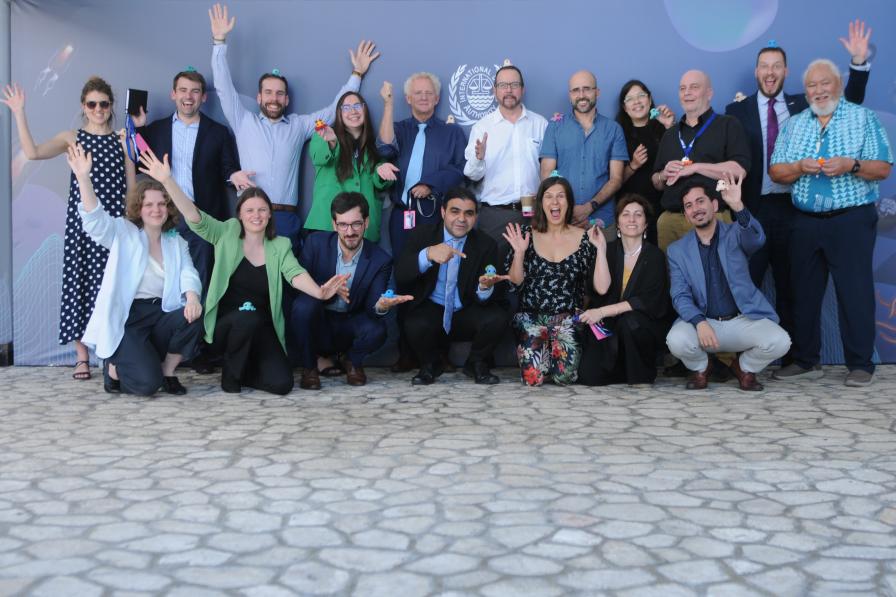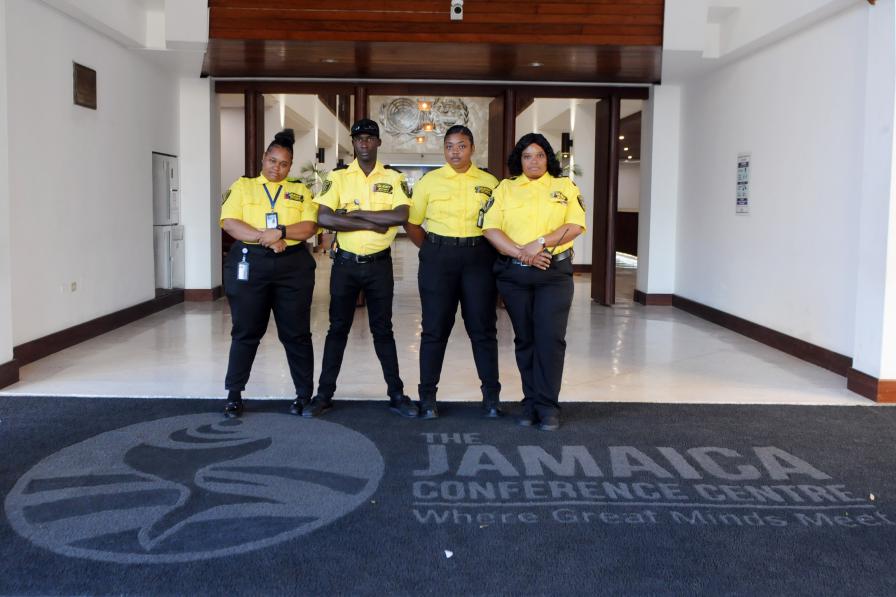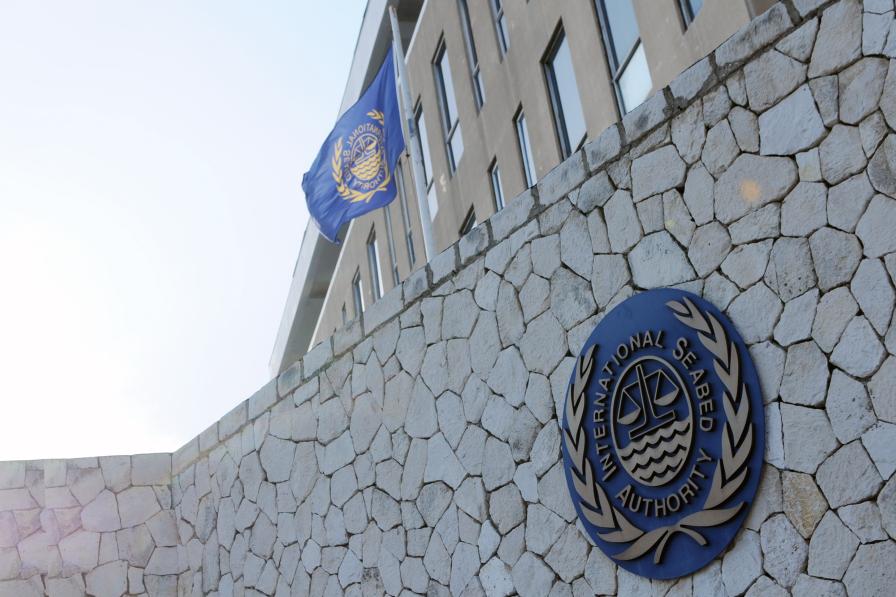Thursday was primarily devoted to revising the consolidated text of the draft exploitation regulations for deep-sea mining. In the afternoon, however, Olav Myklebust, Norway, was elected Council President for the 29th annual session. Elza Moreira Marcelino de Castro, Brazil, was elected as one of the Vice-Presidents. Upon his election, President Myklebust stressed that 2024 “is the most important year for the International Seabed Authority (ISA) and the Council until now.”
In the morning, Interim President Juan José González Mijares, Mexico, resumed the Council’s negotiations. On the duty to cooperate and exchange information (Regulation 3), many members expressed general support. Some delegations proposed amendments, including on the way to refer to coastal states. Members further suggested addressing a provision on cooperation with competent international organizations using language from the UN Treaty on Biodiversity of Areas Beyond National Jurisdiction (BBNJ Treaty).
On the rights and legitimate interests of coastal states (Regulation 4), many delegates pointed to scheduled work under a small group, coordinated by Portugal. A group of members highlighted their prior submission on coastal states. Delegates further discussed whether: the contractor or the ISA should be responsible for identifying all potentially affected coastal states, or whether they should self-nominate; UN Convention on the Law of the Sea (UNCLOS) Article 142 (rights and legitimate interests of coastal states) should constitute the only basis for consultations; references to regional environmental management plans (REMPs) should be retained; and consultations with Indigenous Peoples should be included.
Regarding the qualified applicant (Regulation 5), on the use of vessels, several members welcomed the intent of the provision, but suggested further discussion. A member suggested, attracting mixed reactions, using vessels flagged by the sponsoring state instead of other ISA member states.
On the certificate of sponsorship (Regulation 6), a member suggested addressing the content of the applicant’s statement in the sponsorship certificate and its relationship with ongoing discussions on effective control.
On the form of applications and information to accompany a plan of work (Regulation 7), members focused on, among other things: the relationship between parent, holding and/or subsidiary companies regarding liability; information on the applicant’s financial and technical capability and resources to carry out the plan of work; provisions on a test mining study and the closure plan; and a provision addressing the staff’s code of conduct.
Discussions on the area covered by an application (Regulation 8) addressed a bracketed provision noting that the area under application must be covered by a REMP. Many delegates suggested removing the brackets. Members further discussed a provision on activities managed by any other international regime or organization, expressing divergent opinions. Some suggested drawing language from the BBNJ Treaty.
In the afternoon, newly-elected President Myklebust resumed the negotiations on the consolidated text.
On receipt, acknowledgment, and safe custody of applications (Regulation 9), a delegate suggested retaining a provision on notifications that the Secretary-General shall submit within 30 days of receipt of an application for a plan of work.
On the preliminary review of an application by the Secretary-General (Regulation 10), delegates exchanged views, without reaching agreement, on provisions related to potential applicants claiming preference and priority, and cases of more than one application for the same area and same resource category.
Many members supported that Regulation 11 should be titled “publication, notification, and review of the application” rather than specifically referring to the environmental plans and management systems. A group of countries stressed that the outcomes of the intersessional working group on stakeholder consultations were not included in the consolidated document. Many delegates stressed that the applicant should respond to all comments received rather than “as appropriate.” Delegates further debated: what the consultation process should cover; whether all non-confidential documentation should be posted on ISA’s website indefinitely or for 90 days; whether to keep reference to the “general public” in relation to consultations; and the potential for the Legal and Technical Commission (LTC) to seek advice from independent experts when necessary and, if so, the relevant modalities.
On the rules for considering applications (Regulation 12), members discussed, among other things: when the LTC should commence the consideration of an application; deferring consideration of an application; the consideration of an application expeditiously and within a time-bound period; what the LTC should take into account when considering the proposed plan of work; and a reference to REMPs.
A delegation queried the omission of prior proposals that attracted no opposition and the inclusion of controversial ones in the consolidated document, further noting that following suggestions from contractors rather than members is not acceptable.
Members decided to delete a draft regulation on general obligations of contractors (Regulation 12 bis), noting its provisions are covered elsewhere. On the assessment of applications (Regulation 13), which currently includes two alternatives, a member emphasized that their suggested version offers a logical sequence and avoids regulatory confusion. He explained that the LTC needs to assess whether the applicant is qualified and whether the application meets all standards and requirements. Some members supported the alternative proposal, while others expressed flexibility.
In the evening, a side event hosted by Nauru Ocean Resource Inc. offered an operational update of the NORI-D project.
To receive free coverage of global environmental events delivered to your inbox, subscribe to the ENB Update newsletter.
All ENB photos are free to use with attribution. For the 1st Part of the 29th Annual Session of the ISA, please use: Photo by IISD/ENB | Diego Noguera
Council Meeting
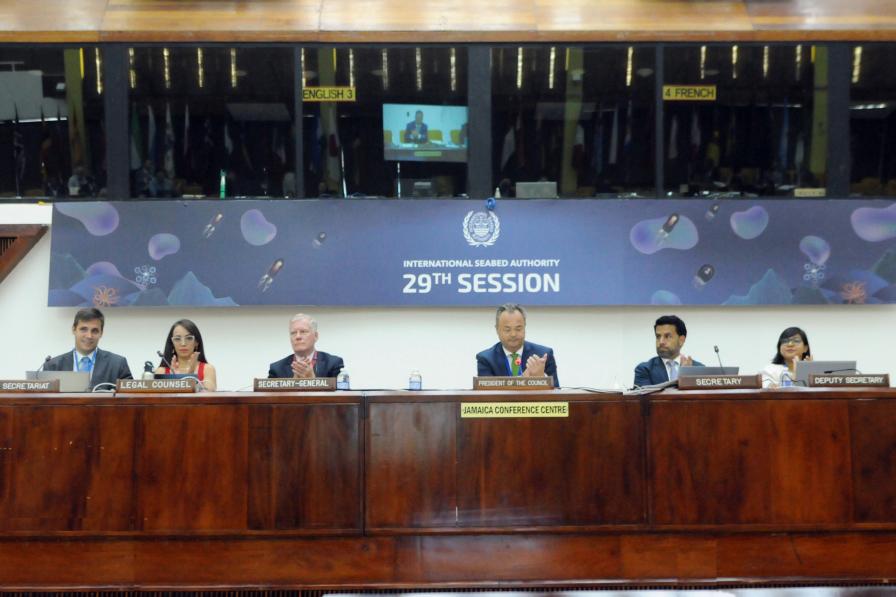
The dais applaud outgoing ISA-29 Interim Council President Juan José González Mijares, Mexico, for his leadership throughout his term.

Marie Bourrel-McKinnon (second from left), ISA Secretariat, with Carmen Coleto (left), Esther Salamanca, and Javier San Román, Spain
